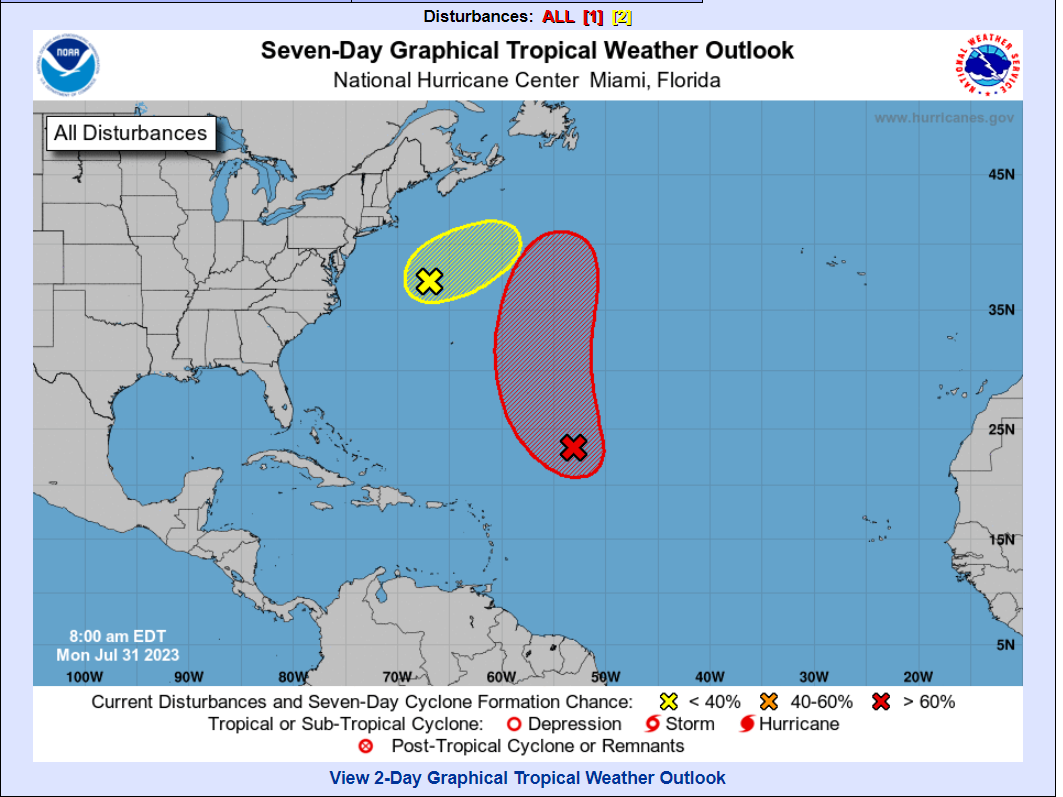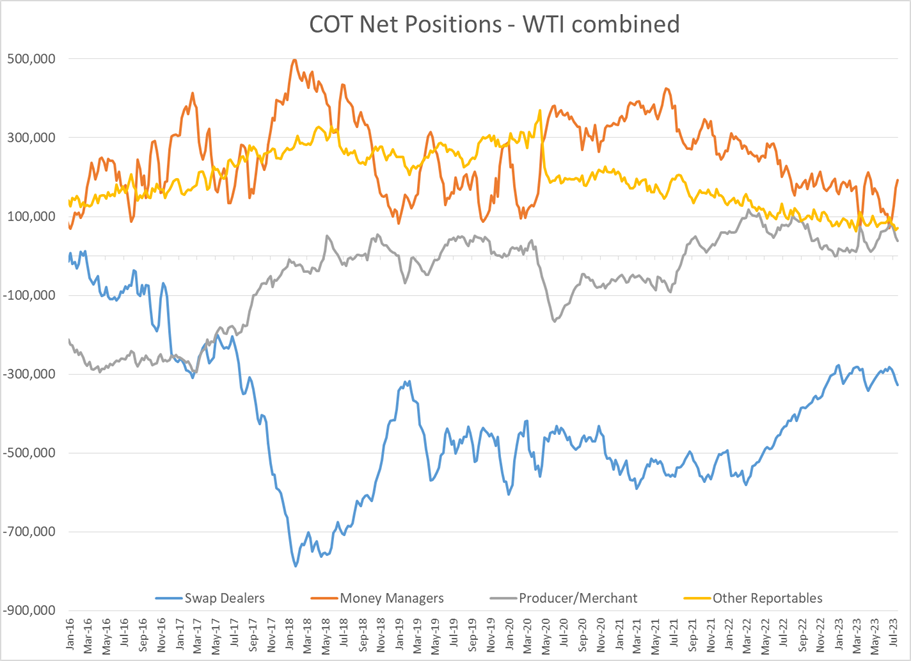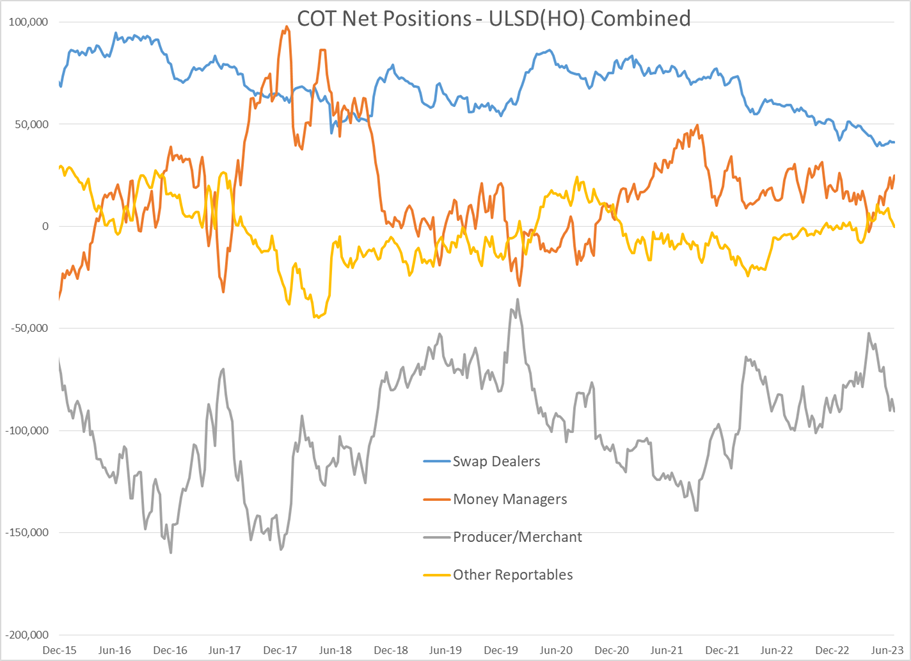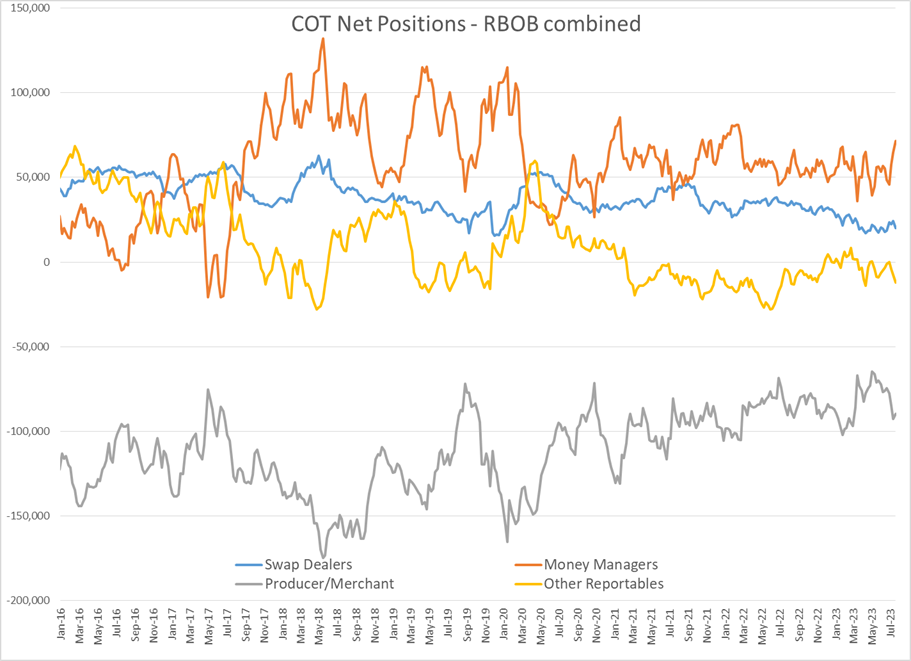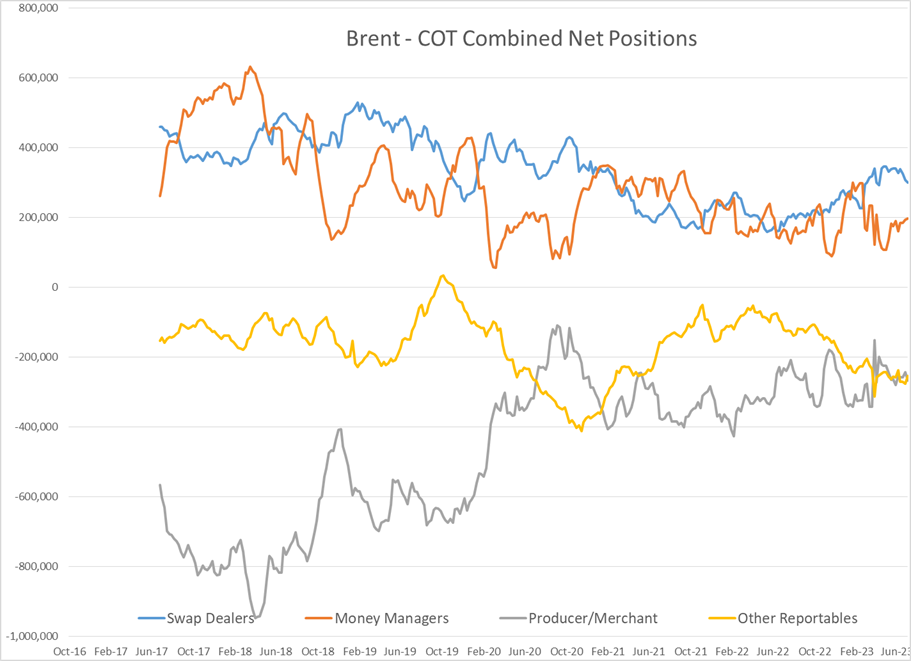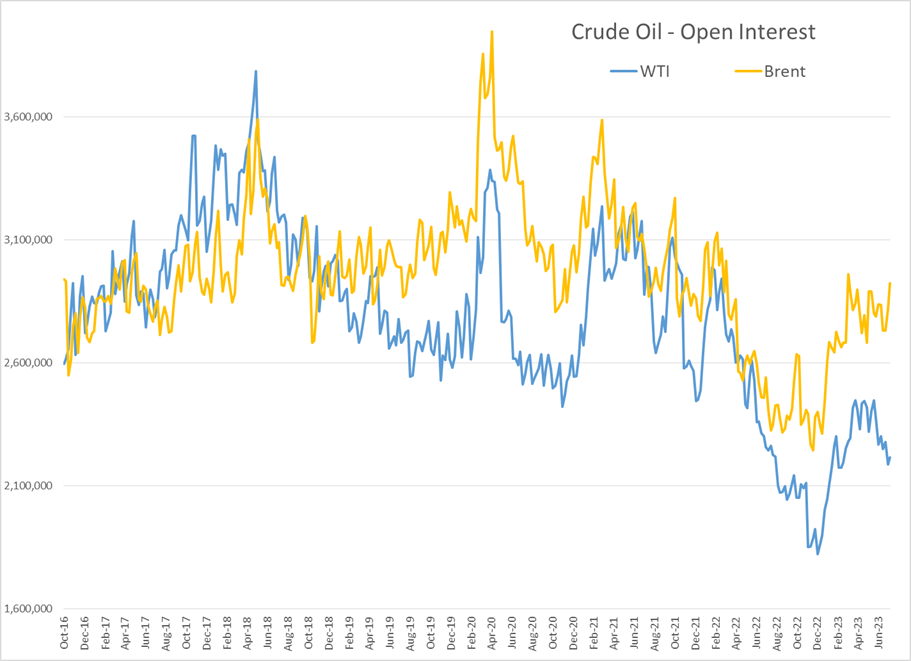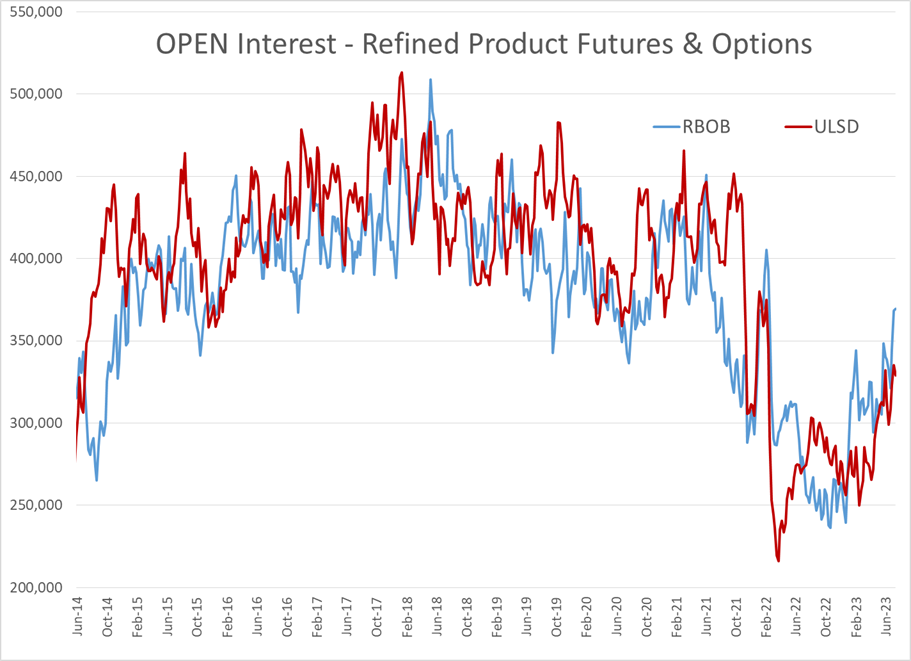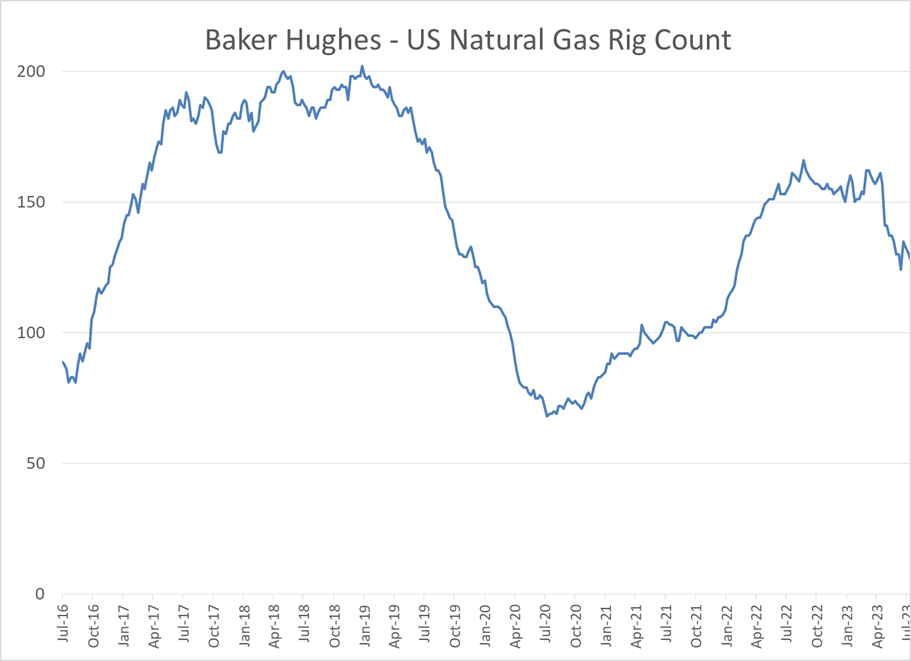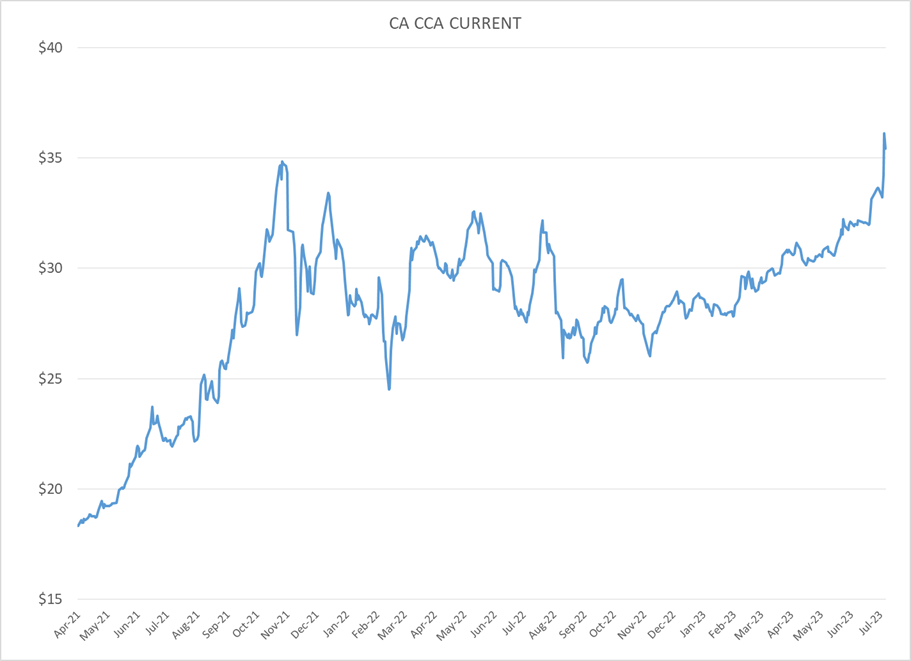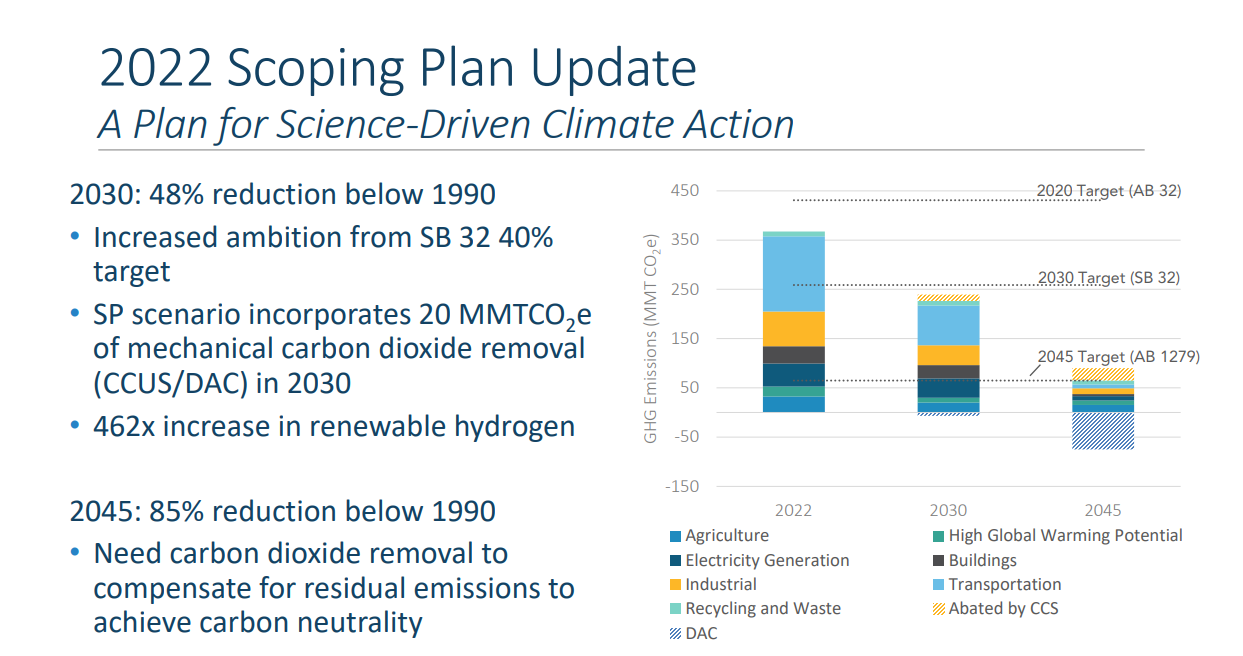Refined Products Are Trading Down A Couple Of Cents In The Early Going While Crude Oil Contracts Are Seeing Modest Gains As July Trading Comes To A Close

Refined products are trading down a couple of cents in the early going while crude oil contracts are seeing modest gains as July trading comes to a close, in what should end up being the strongest month in almost a year for energy contracts.
RBOB gasoline futures came within 65 points of reaching the $3/gallon mark Friday, before stalling out and pulling back to around $2.93 this morning. The July contract expires today, and August is trading more than 6 cents lower, reducing the chances of another run at $3 gasoline futures near term, while physical prices across the 3 West Coast spot markets are all well above that level. Most cash markets are already trading vs August futures, so watch that contract for price direction today if you’re not already.
ULSD futures topped out at $2.9748 Friday before sliding to around $2.93 this morning but aren’t seeing anywhere near the backwardation of gasoline (another sign of the dramatic changes from a year ago) and the charts suggest a decent chance diesel futures can still make a run at $3 over the next several days. Just like gasoline, west coast ULSD spot markets are all trading north of $3, while markets east of the Rockies range from $2.86-$2.95 this morning.
Money managers continue to jump on the energy bandwagon, adding length across the board last week in crude and refined products. The net length (bets on higher prices) for RBOB and ULSD is at the highest level of the year, with the late-comers still willing to buy after the strong July rally. From a historical perspective, the outstanding length held by the big speculators is relatively mild, so it’s not yet a contrary indicator that the trend may soon run out of steam.
Open interest continues to recover in RBOB ULSD and Brent contracts as easing volatility and margin requirements encourage funds to return to the market after many were forced out during last year’s chaos. The exception to the OI recovery rule is WTI, which is still running roughly ½ million contracts lower than anything we saw from 2016-2021.
The reason for the slump in the classic NYMEX crude oil contract appears to be the rapid expansion in trading activity for new WTI contracts FOB Houston and Midland as the export market for domestic crude grades increases. Both the CME Group (NYMEX parent) and ICE (Home of the Brent contract) are racing to take advantage of the changing patterns, and both exchanges have reported record trading activity in their new WTI contracts over the past week.
Baker Hughes reported a drop of 1 oil rig and 3 natural gas rigs drilling in the US last week, continuing the trend of slow but steady attrition in the rig count that’s been happening for most of the year. Unlike the past 3 weeks however, the Permian basin didn’t lead the slide, and actually increased by 1 rig on the week. Don’t expect a rapid recovery in rig counts with oil prices north of the $80 mark given the long lead times needed to acquire equipment and crews, but we may see the declines come to an end if prices can hold near current levels.
California Carbon Allowance (CCA) prices spiked to a record high last week after the Air Resources Board (CARB) announced plans to make the Cap & Trade program more stringent. California’s Low Carbon Fuel Standard (LCFS) credit values meanwhile continue to languish as new production of renewables, most notably renewable diesel, creates a surplus off credits and the state’s plans to also make that program more stringent are less clear.
The National Hurricane center is tracking two potential storm systems in the Atlantic this week, one of which is given 80% odds of being named, while the other has just 20%. Both systems look like they’ll stay far enough out to sea to not be a threat to land, while the map suggests they could end up merging off the coast of New England. Two storm systems converging off of the New England coast…seems oddly familiar.
Click here to download a PDF of today's TACenergy Market Talk.
News & Views
View All
Week 19 - US DOE Inventory Recap

Another Wave Of Selling Pushed Energy Futures To Fresh Multi-Month Lows On Tuesday
The search for a bottom continues after another wave of selling pushed energy futures to fresh multi-month lows on Tuesday. While most of the futures complex remains on the edge of a technical breakdown, we still haven’t seen the snowball effect of selling that signals the bulls (or more likely their trading algorithms) have finally thrown in the towel.
The most important technical test of the day comes from the RBOB futures contract that managed a modest bounce off of its 200-day moving average Tuesday, and could make a case for a recovery rally if it’s able to sustain a move higher from here. If that layer of support breaks however, there’s not much on the charts to prevent another 20 cents of losses.
We’re seeing a bit of the opposite reaction this morning to the May CPI report that came in just below expectations than we did yesterday when the PPI report showed inflation was still running hot. Both refined products added a penny in the first few minutes following the report, tagging along with a bounce in US equity futures. The annual inflation rate from the CPI came in at 3.4%, which is still well above the FED’s target of 2%, but the monthly rate of .3% was slightly lower than many estimates around .4%. Both the PPI and CPI reports showed the spring rally in fuel prices leading the tick up in inflation, which give us good reason to believe we’ll see lower numbers in June now that both gasoline and diesel futures have dropped 40 cents from their April highs.
ULSD futures hit their lowest level since July 5th of last year, which was just before the contract rallied more than $1/gallon in the next two months. Physical traders are also acting bearish on diesel contracts with more heavy selling in the LA and Group 3 markets which dropped to 14 cent discounts to futures Tuesday, but were left in the dust by Chicago values that collapsed to a 30 cent discount.
The latest crash in Chicago diesel basis combined with futures trading near a 10 month low pushed cash prices to the lowest level we’ve seen since December 2021, offering a seasonally unusual opportunity for those that are still waiting to lock in their fuel price for the next year.
The diesel overhang is also witnessed in the ongoing collapse in California LCFS credit values which reached an 8 year low Tuesday at $45/MT yesterday, down from $140/MT just over 2 years ago. The drop in LCFS values combined with last year’s collapse in RINs and the upcoming change to the blender’s tax credit has already caused the closure of a few biodiesel plants, a re-conversion of a refinery back to traditional fuels, and then Tuesday the world’s largest RD producer issued a profit warning due to a continued decrease in both diesel prices, and the subsidies for renewables. For those that lived through the early days of the ethanol industry that included multiple cycles of bankruptcies and frequent regulation changes wreaking havoc, this cycle on the diesel side of the barrel feels oddly similar.
The IEA continues to bang a bearish drum to try and counteract OPEC’s bullishness in their monthly reports, citing weak demand in Europe as a driver of OECD nations moving into fuel consumption contraction in the first quarter of 2024. The tax-payer funded agency also acknowledged the drop in refinery margins in April as the distillate glut continues across much of the world, while also noting that refinery run rates are set to increase further in the back half of the year. The report also noted that even if OPEC & Friends (now Rebranded as DoC) maintain their output cuts through 2025, growth in output from the US, Guyana, Canada and Brazil will be enough to keep world supply outpacing demand.
RIN prices got a quick bounce this week after a Federal Court denied a refinery suit against the EPA’s RFS rules for 2020-2022, but already gave back those gains yesterday, with D4 and D6 values holding around the $.45/RIN mark, down slightly from this time last year when they were worth about $1.50.
Click here to download a PDF of today's TACenergy Market Talk.

Energy Prices Are Trading At Multi-Month Lows
Energy prices are trading at multi-month lows and are on the verge of a technical breakdown this morning after Monday’s attempted rally fizzled, and concerns over high inflation and low demand both seem to be keeping buyers at bay.
The complex was trading modestly lower overnight, and then the slide picked up steam following the April Producer Price Index (PPI) report which showed stubbornly high inflation of .5% for the month (which would annualize to 6%) giving the FED another reason to hold off on cutting interest rates. The bright side to this report is that the main contributor to April’s higher inflation reading was higher energy prices, and with the sharp pullback we’ve seen over the past month that component of pricing pressure should come down in the May report.
OPEC continues to bang a bullish drum in its monthly oil market report, increasing its economic estimates for Q1 of this year, and holding its forecasted demand growth steady at 2.8% and 2.9% for 2024 and 2025 respectively. The report also noted big decreases in clean-product tanker rates with east of Suez prices down 10% and West of Suez rates down 20%, in a sign that the physical market is not stressed over the potential shipping disruptions around the Middle East. Refinery margins declined across all major global markets as an end to a busy spring maintenance season and new capacity increased output.
What’s up Doc? The cartel also made a tweak to its monthly report and will now be highlighting output and demand for the countries participating in the Declaration of Cooperation (DoC…aka OPEC & Friends) to demonstrate solidarity and unity, which may signal that some in OPEC are getting nervous that the members may become more uncooperative in the coming months. Total OPEC output dipped by 48mb/day during April with declines in Nigeria and Iraq offsetting increases in Iran and the Congo. Total DoC output declined by 246mb/day during the month with Russia’s output declining by 154mb/day and Kazakhstan’s output down by 50mb/day.
Space on Colonial’s main diesel line (Line 2) settled in positive territory for the first time this year, as the building contango for distillates helps to incentivize shippers. There also appears to be another buildup of un-wanted inventory of distillates in several regional markets with basis values in LA, Chicago and the Group 3 market all reaching multi-month lows this week.
Some of the weakness in diesel prices can be blamed on recent wet weather delaying planting in several states, and those delays are also helping corn and ethanol prices rebound to approach their highest levels of the year.
New tariffs on Chinese EV’s are making headlines this week, but it’s a potential tariff on Used Cooking Oil (UCO) from China that could have a larger impact near term on the fuel industry as US grain processor think it’s unfair that China dares recycle oil to the detriment of their food to fuel factories.
Speaking of EV’s, the EIA this morning wrote that the US share of electric and hybrid vehicle sales decreased on the first quarter of 2024 after more than 3 years of steady growth.
Click here to download a PDF of today's TACenergy Market Talk.
